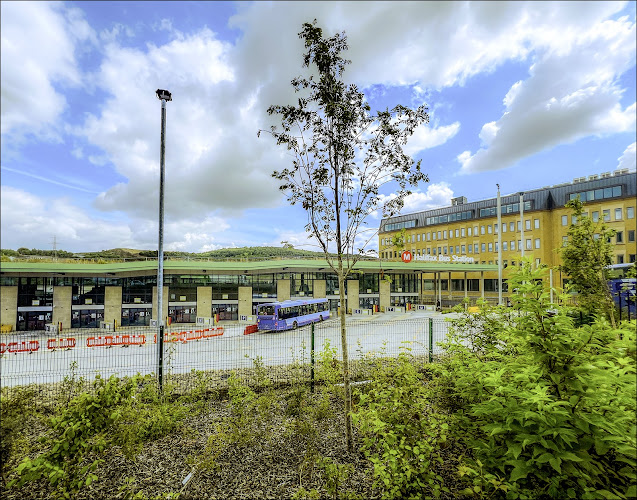Tuesday, April 11, 2023
Pigs On Show
Martin's Bank And Ford Anglias
Echoes Of The Past
Monday, April 10, 2023
In The People's Park
Another of the "Sketches of Halifax" from the 1882 article in the Illustrated London News.
"In The People's Park: The People's Park, given to the town by the late Sir Francis Crossley ... was laid out with much taste and skill by Sir Joseph Paxton; and its terrace, shown in one of our Sketches, likewise commands an interesting view"
Rock Of Ages
From what little I can remember, I think I had a good time there last night. It was great to catch up with friends I hadn't seen for ages, and to get the opportunity to celebrate Jack's move down the hill.
Saturday, April 08, 2023
Friday, April 07, 2023
The Greens
Sometime, you can be going about your day's business, walking the dog or buying a bag of pork pies, and suddenly you have to stop in your tracks, look around and say "what a magnificent place I am lucky enough to live in!"
Monday, April 03, 2023
A View Over Halifax, 1882
In August 1882, The Yorkshire Agricultural Society held its annual show at Saville Park, Halifax. The event drew considerable publicity, not just from other parts of the County, but from wider afield as well. The Illustrated London News - if you are not familiar with the publication, think of it as a bit like The Times but with plenty of pictures - despatched an artist to provide illustrations of the show, and, at the same time, asked them to produce some general sketches of the town itself. This was the origin of the small collection of sketches of Halifax that were featured in the edition of the 5th August 1882.
One of the most striking of these illustrations is a view of the town from Southowram Bank. The enormous number of mill and factory chimneys visible is witness to the busy industry of the town, and this is underlined in the short article which accompanies the feature:-
Halifax, which now ranks third of the Yorkshire woollen cloth manufacturing towns, only Leeds and Bradford standing higher in commercial importance, is situated on the Hebble, a tributary of the river Calder, among the bare hills of that region, which has never been famous for agricultural fertility. There is, however, abundance of water, and the great Yorkshire coalfield is not far removed, so that two of the most necessary conveniences for manufactures have been supplied to Halifax industry.
DAYS : Twigs, Windows And Koi Carp
Sunday, April 02, 2023
Uncle Harry's Cousin
This photograph is simple identified on the back with a caption saying “Uncle Harry’s Cousin”. The uncle was Harry Moore, husband of my father’s sister, Annie. I have no idea, however, who the cousin was - but what a lovely dress! The original print was a faded sepia - but with the help of a little artificial intelligence, the colours come out wonderfully.
Bill Bailey Won't You Please Come Home
The message on the reverse of the card is equally full of unanswered questions. Will Mr Mumford, the butcher of Brightside, ever make it home? Who knows!
The Empty Niche Of Halifax
The Palais Glide
Dukes And Coffee Cups
Bus Station Dynasties
History is sometimes measured in dynasties - the Tudors or Stuarts, the Tangs or the Yans - but for most folk a more prosaic way of markin...

-
Whilst 198392cjh is the only person/machine/computer programme to have provided feedback to my Daily Photo Blog (see "Apple Campers Bui...
-
Y ou can spend too long sat inside reading old newspapers and cataloguing old postcards. There comes a time in the affairs of man when he s...






















